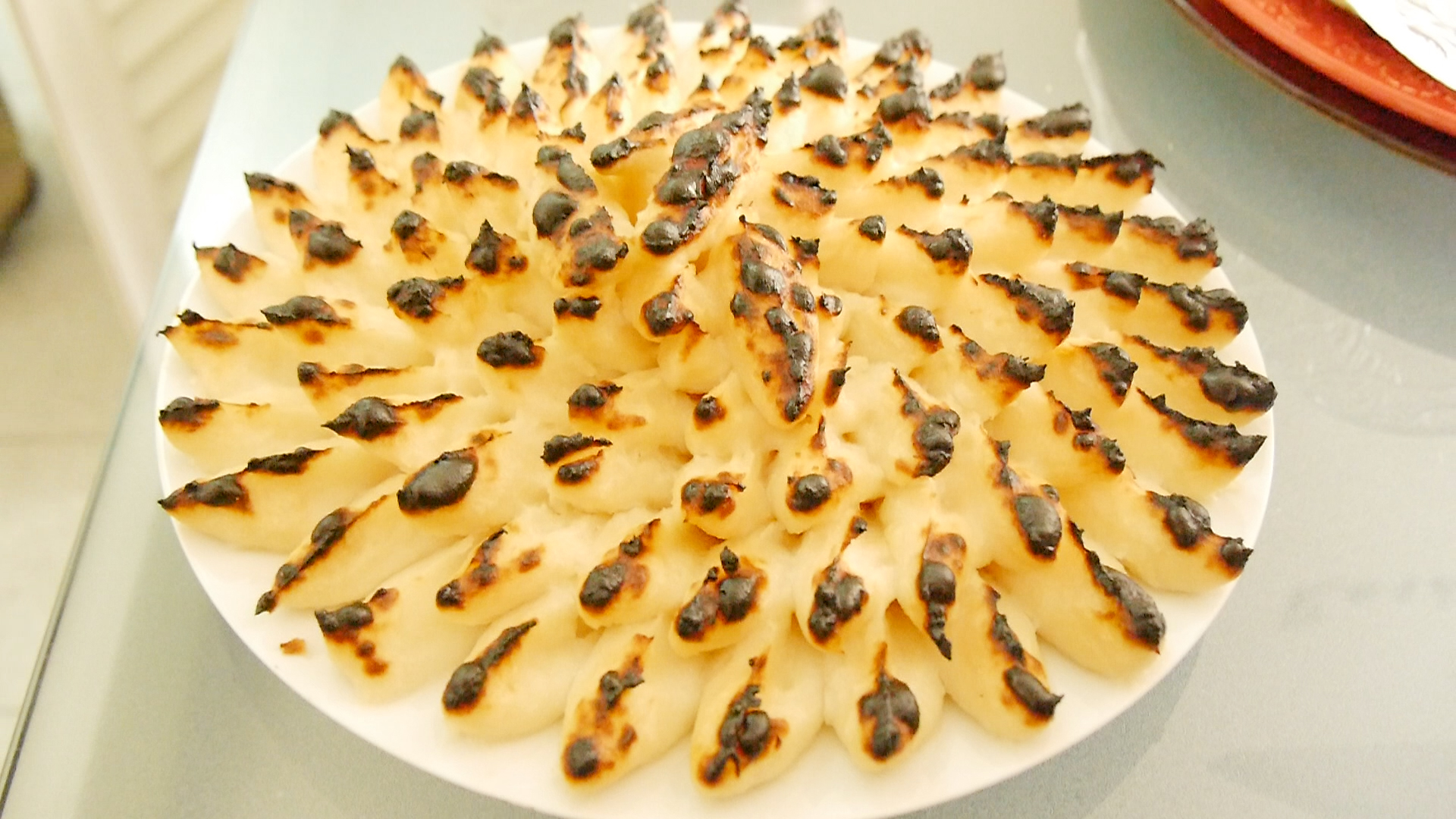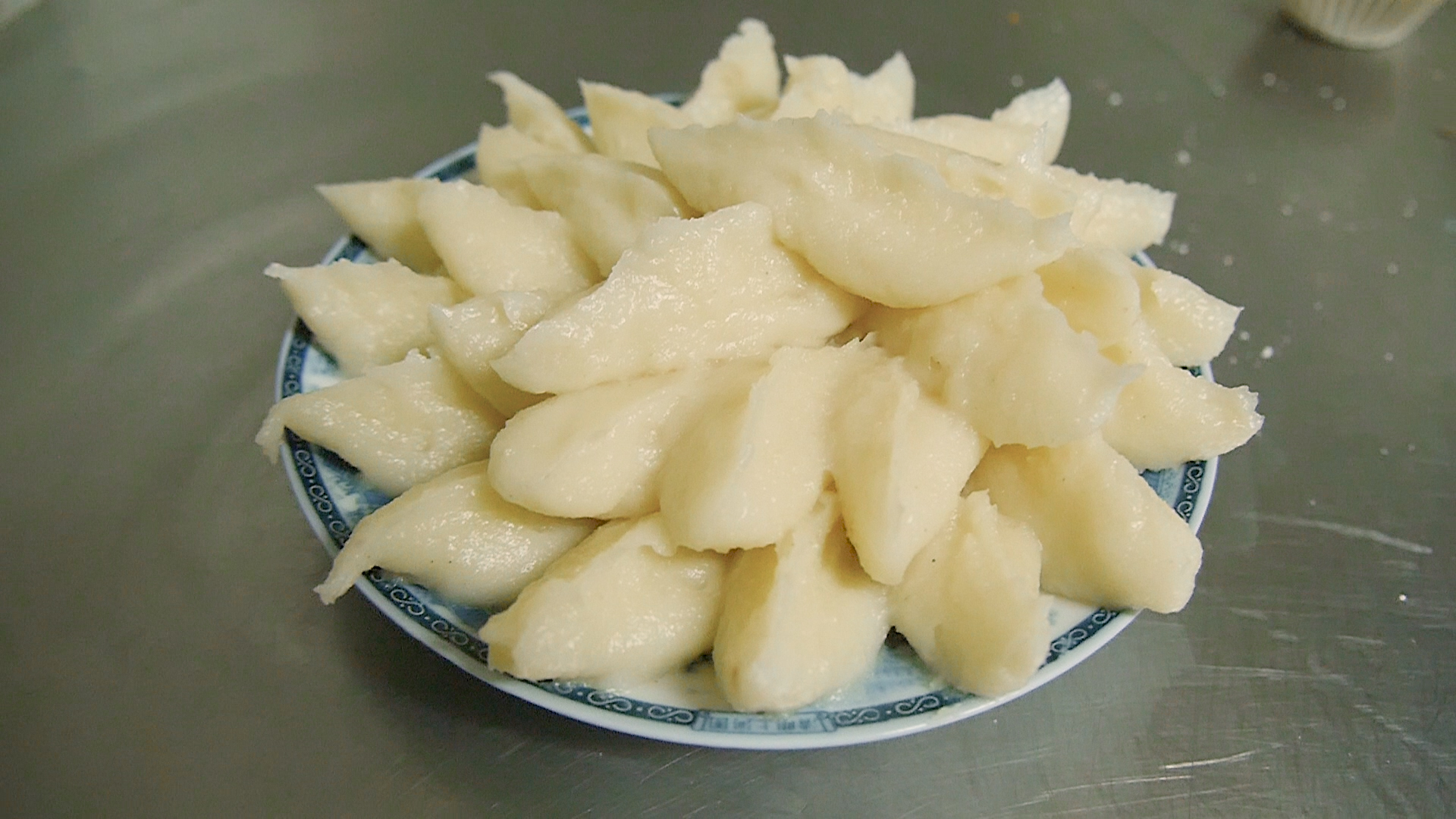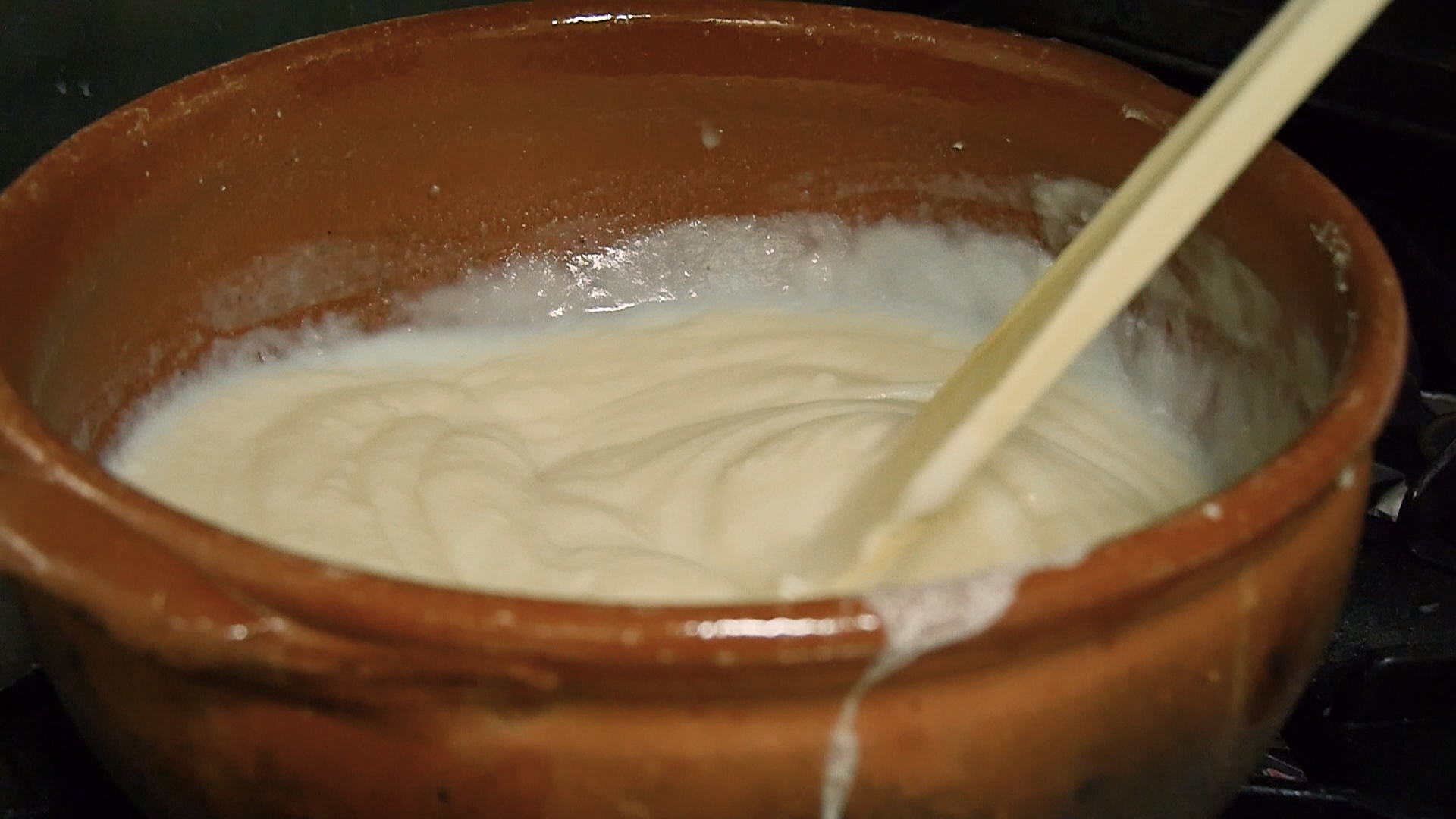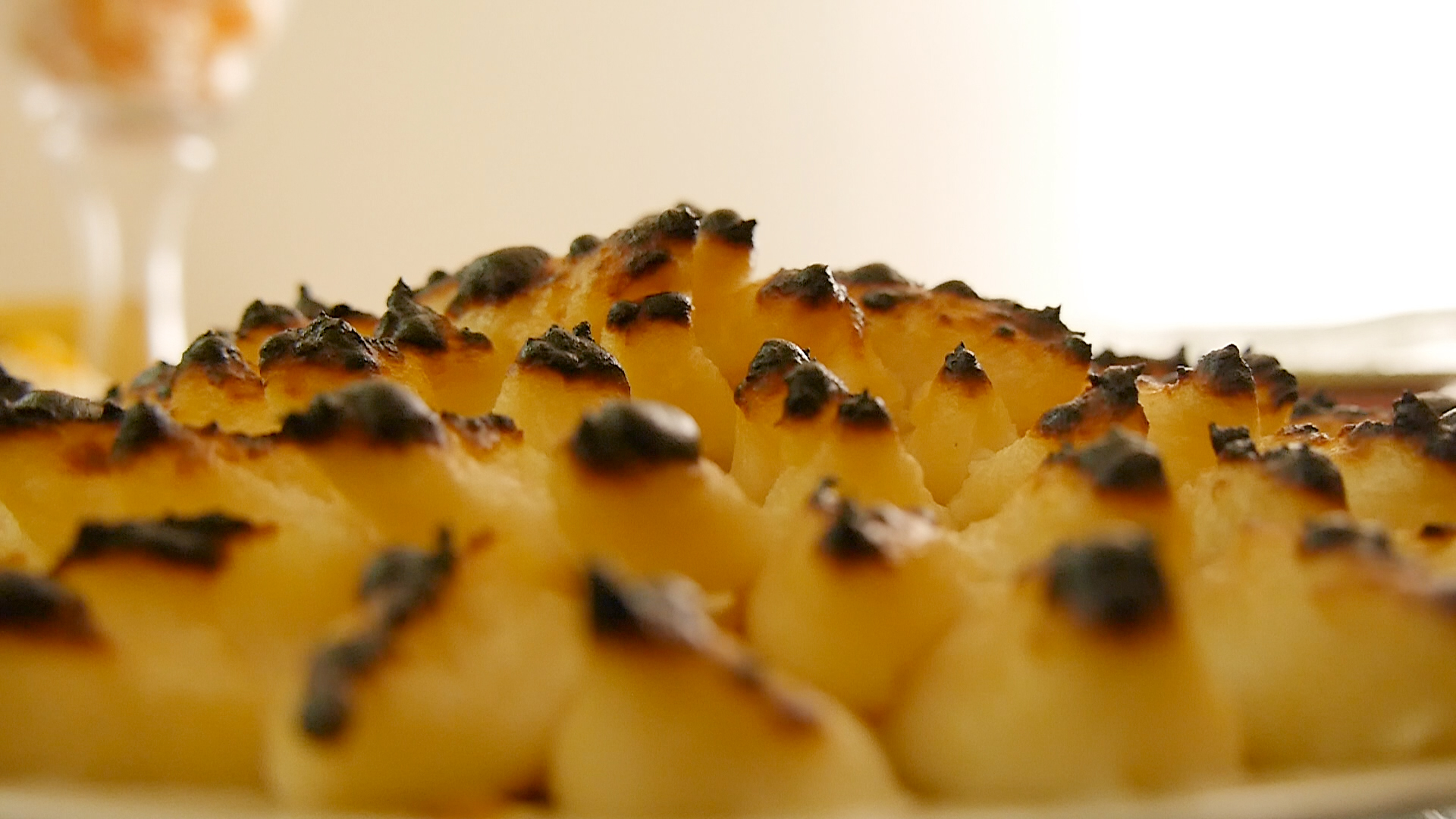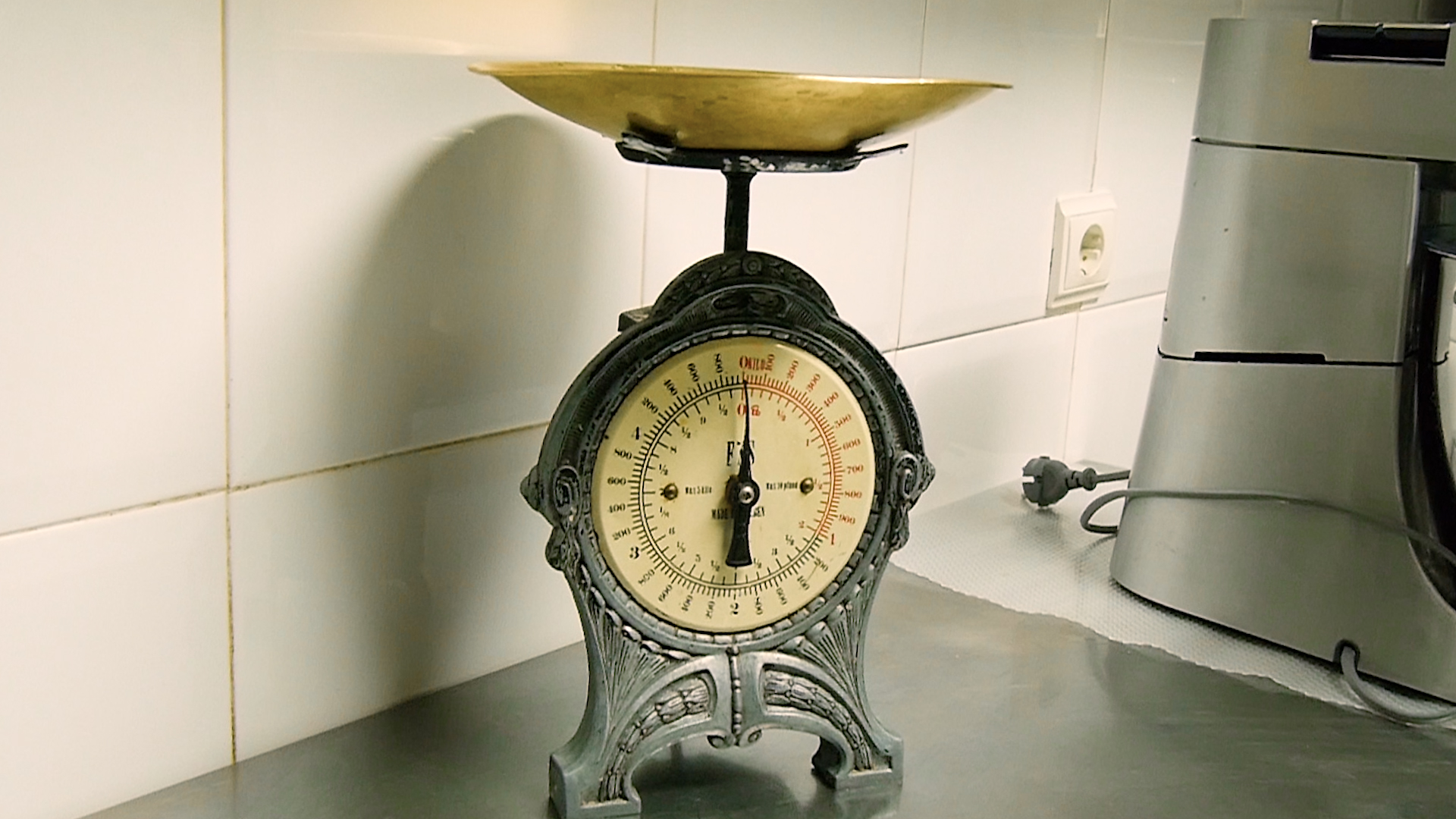Quem sabe alguma coisa sobre doçaria conventual portuguesa, conhece as irmãs Cardoso, Judite e Laurinda, de Portalegre. Graças ao seu conhecimento culinário e a muitos anos de confecção, é possível hoje reconstruirmos uma história de doces conventuais, atravessando algumas gerações, que liga os conventos da cidade, noutros tempos idos, às actuais doceiras, mais novas, como Rosária Maria.
Antes de se ter tornado uma doceira de referência em Portalegre, e não só, Rosária Maria já fazia alguns bolos, quase por lazer. Mais tarde, e sobretudo depois de ter sido uma das poucas doceiras locais a participar no curso de doçaria conventual dado por uma das irmãs Cardoso, passou a não ter mãos a medir. O manjar-branco é apenas um dos doces que faz.
O manjar-branco tem uma história de muitos séculos, pelo menos desde a Idade Média, e consta dos receituários ricos de vários países europeus. É um doce nobre e requintado. Existe também em Coimbra um manjar-branco com carne de galinha, como mandam as receitas medievais, mas em Portalegre os ingredientes brancos ficam-se pelo açúcar, leite e farinha de arroz. Disposto em forma de quenelles, vai ao forno (450º) para tostar. Uma delícia.
***
Anyone claiming to know something about Portuguese conventual sweets must know about the Cardoso sisters, Judite and Laurinda, from Portalegre. Thanks to their culinary knowledge and to many years of cooking, it is possible today to reconstruct a history of conventual sweets, spanning a few generations, which connects the convents of the city as they were in former times, to our contemporary and younger confectioners such as Rosária Maria.
Before she became a reference confectioner in Portalegre and beyond, Rosária Maria already baked some cakes, but almost only for leisure. Later on, and especially after she was one of the few local confectioners to attend the course of conventual confectionery given by one of the Cardoso sisters, she had no time to spare. The “manjar-branco” (as in “blancmange”) is just one of the sweets she now makes.
The “manjar-branco” has a history of many centuries, at least since the Middle Ages, and it can be found within the rich recipe books of various European countries. It is a noble and exquisite sweet. In Coimbra, there is also a “manjar-branco”, but with chicken meat, as the medieval recipes do; while in Portalegre, the white ingredients are sugar, milk and rice flour. It is prepared in the form of quenelles and it toasts in the oven (450º C). It’s wonderful.
PUBLICIDADE

